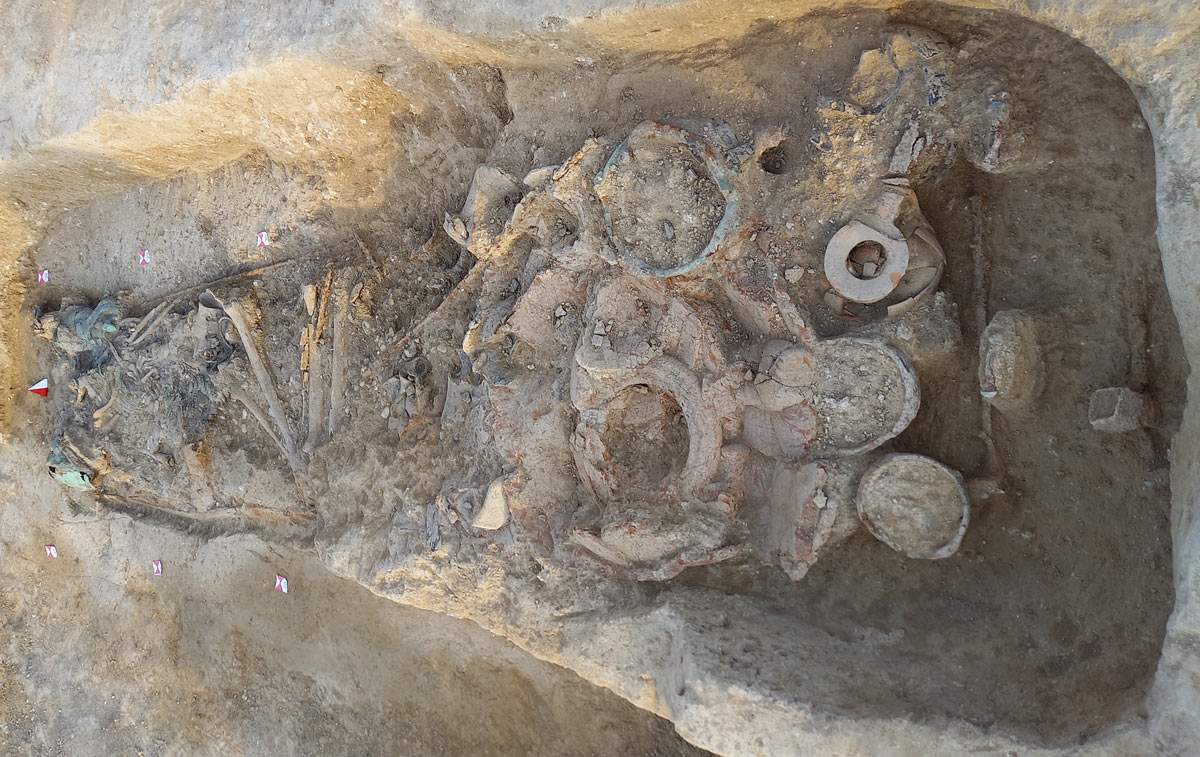Major archaeological discovery in the Marche: warrior from the Picenian age found
In Sirolo, in the province of Ancona, on Mount Conero, a Picenian-age, inhumation burial tomb was found during some indagin irecent investigations, within which the remains of a warrior were found. The burial dates back to the 6th century B.C., is located not far from the Necropolis of the Pines, and was considered a discovery of extraordinary importance. The excavations that led to the discovery are directed by archaeologist Stefano Finocchi of the Soprintendenza Archeologica, Belle Arti, e Paesaggio delle Marche and were conducted by the ArcheLAB cooperative.
The statue represents one of the examples of Italic auctoritas of priestly and political kingship linked to ancient female cults. As part of the excavations that unearthed the Picenian warrior, furnishings were also found: the helmet, spear, long sword, dagger complete with scabbard and axe, as well as a rich ceramic and bronze set and fibulae (made of bronze, amber and bone) placed on the chest. A set that, according to superintendence technicians, represents valuable study material. In addition, the presence of at least two spits and some other iron tools (creagra and winged) for cooking meat, constitute important references for the practice of banqueting.
The tomb of the Picenian warrior is an inhumation tomb in a rectangular grave, the deceased is laid in a crouched position on his right side, and the accompanying extensive grave goods are arranged beyond the feet, where most of the ceramic finds are collected. Based on the arrangement of the fibulae, archaeologists believe that the deceased was wrapped in a robe and then laid at the bottom of the grave (or rather inside the coffin), above a layer of gravel, probably marine: this is a ritual not found only in the Conero area and has characterized the Picenian age since its beginnings.
Also found inside the burial was a diphros, or portable folding stool, of great importance. The queen found not far away (the Queen of Sirolo, now preserved in the Numana Museum) had among her treasures the tripod, or image of fire in its manifestation and embodiment on earth of the divine will, as characteristic of the sacred queen. The warrior, on the other hand, has a pedestal, a symbol of universal function and divine delegation to administer, and being a stool and not a throne represents an early form of human differentiation in the cosmic axis going up a rung as in a ladder. The archaeological studies of the material found in the tombs will be an opportunity to renew knowledge about the tradition of the village of Sirolo.
“The economic efforts of the municipal administration to carry out a campaign of geophysical and topographical investigations in the Picenum Necropolis of the Pines,” says Sirolo Mayor Filippo Moschella, “allowed the discovery of the warrior’s tomb, so our efforts have been amply repaid. After years of local institutional silence, we will undertake to evaluate, together with the Superintendence, the results of the activities performed, also in order to stimulate archaeological and cultural eco-sustainable tourism practiced throughout the year, to the benefit of Sirolo’s activities and community.”
 |
| Major archaeological discovery in the Marche: warrior from the Picenian age found |
Warning: the translation into English of the original Italian article was created using automatic tools. We undertake to review all articles, but we do not guarantee the total absence of inaccuracies in the translation due to the program. You can find the original by clicking on the ITA button. If you find any mistake,please contact us.




























